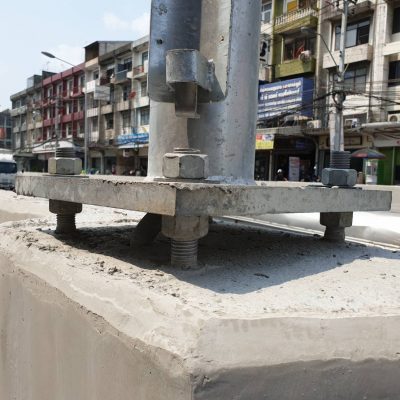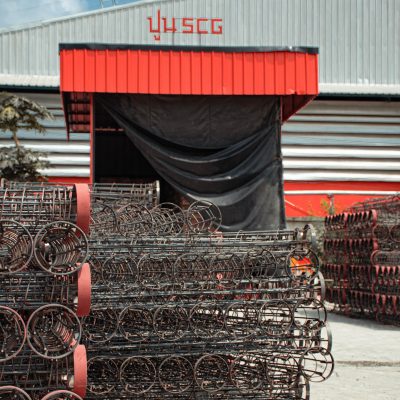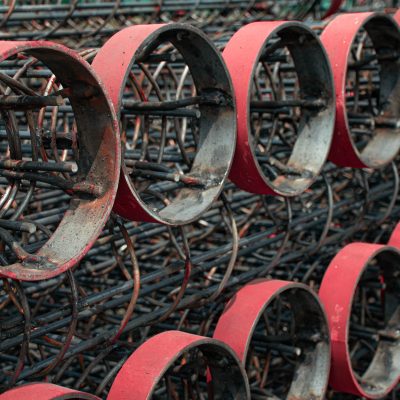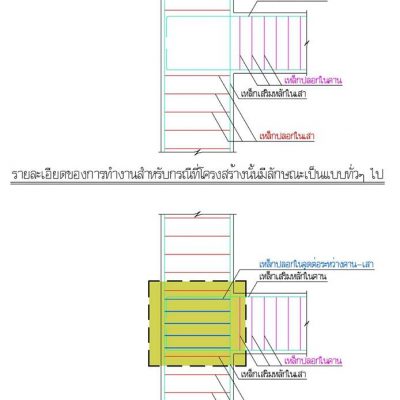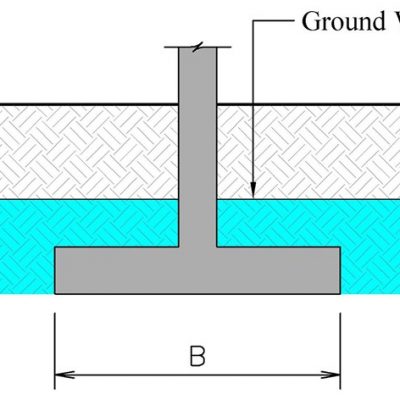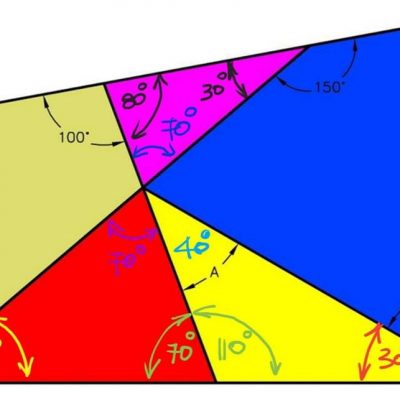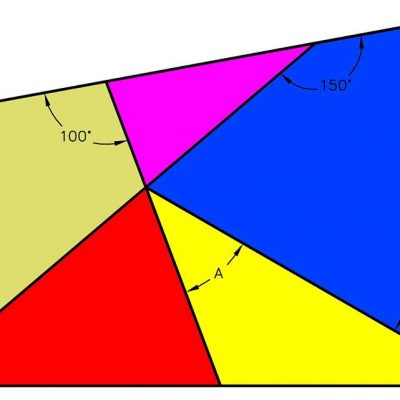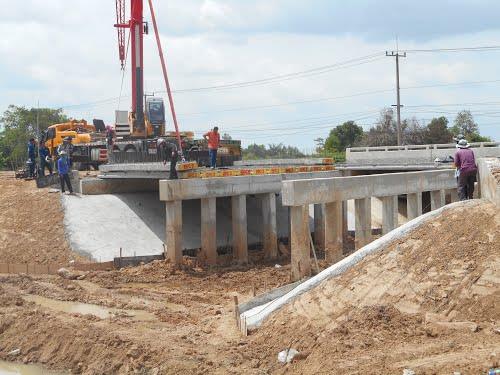
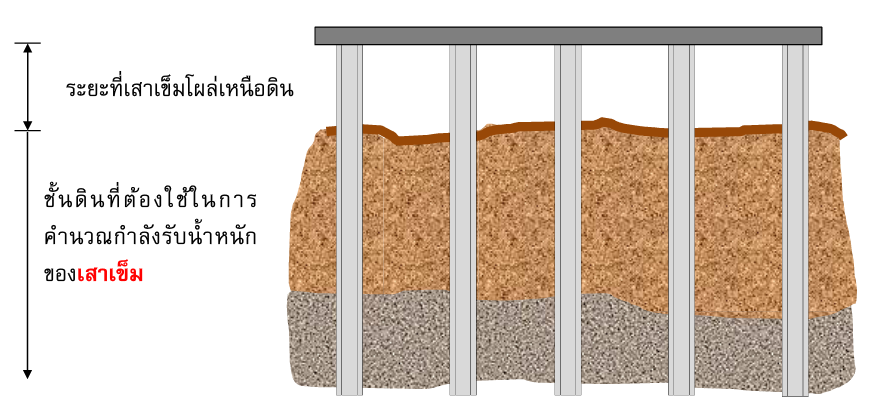
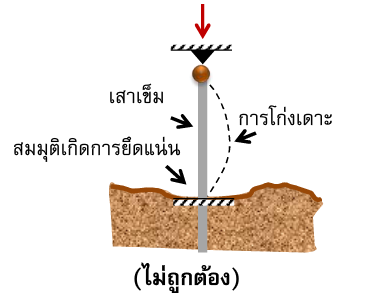
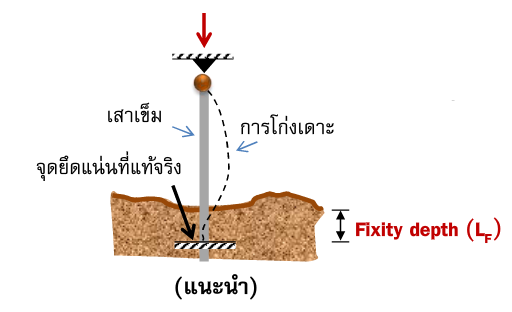
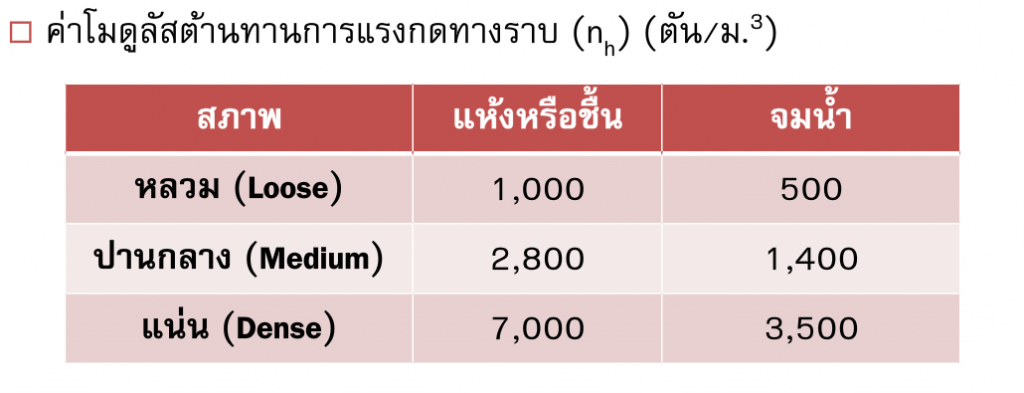
ref : https://www.facebook.com/bhumisiam/posts/1302631393116316
สวัสดีครับแฟนเพจที่รักทุกท่าน
วันนี้ผมจะขอมาตอบคำถามของเพื่อนวิศวกรท่านหนึ่งที่หลังไมค์มาถามผมเกี่ยวกับการออกแบบเสาเข็มสำหรับกรณีที่โครงสร้างเสาเข็มที่ใช้รับ นน นั้นไม่ได้ฝังอยู่ในดินทั้งหมดให้แก่เพื่อนท่านนี้ และ เห็นว่าอาจมีประโยชน์จึงนำมาเล่าและขยายความให้แก่เพื่อนๆ ทุกๆ ท่านได้ที่บกันด้วยนะครับ
ขอ ยก ตย ของกรณีปัญหาแบบนี้ก่อนละกันนะครับ เช่น กรณีฐานรากของงานสะพานแบบเสาตับ (PILE BENT) หรือท่าเรือ กรณีแผ่นพื้น FLAT SLAB ของงานโรงงานซึ่งวางอยู่บนเสาเข็มนั้นมีการทำระดับให้สูงขึ้นมาเหนือดินถมด้านบนมาก ทำให้บริเวณส่วนด้านบนของเสาเข็มต้องโผล่ขึ้นมาเหนือดิน เป็นต้น โดยปัญหาที่อาจเกิดขึ้นจากกรณีนี้ก็คือความยาวของเสาเข็มที่ปราศจากการโอบรัดของชั้นดินที่มีความแข็งแรงมากเพียงพอ (ดู ตย ได้จากในรูปที่ 1) ซึ่งอาจจะส่งผลต่อ
(1) ปัญหาจากการรับ นน ของเสาเข็ม (PILE SAFE LOAD)
(2) ปัญหาจากการโก่งเดาะของเสาเข็ม (PILE BUCKLING)
ดังนั้นการแก้ปัญหาในลักษณะแบบนี้ต้องแก้ทีละประเด็นและต้องแก้ให้ตรงจุดด้วยนะครับ เรามาดูวิธีการแก้ไขปัญหาเหล่านี้ทีละประเด็นนะครับ
(1) การแก้ปัญหาจากการรับ นน ของเสาเข็ม (PILE SAFE LOAD)
ในแง่ของ SAFE LOAD มีวิธีการง่ายๆ ครับ คือ เวลาที่คำนวณค่า FRICTION ของเสาเข็ม ให้เราใช้ความยาวเฉพาะส่วนที่ฝังอยู่ในดินในการคำนวณเท่านั้น ดังนั้นเรื่องนี้ถือเป็นเรื่อง SOIL FAILURE ซึ่งผมเชื่อว่าทุกๆ ท่านสามารถพิจารณาทำการออกแบบได้ (สามารถดู ตย ได้จากในรูปที่ 2)
(2) การแก้ปัญหาจากการโก่งเดาะของเสาเข็ม (PILE BUCKLING)
เนื่องจากเสาเข็มมีความยาวส่วนที่โผล่เหนือดินขึ้นมาจึงอาจทำให้เสาเข็มอาจมีปัญหาเรื่องความชะลูดที่มากเกินไปจนทำให้เกิดการโก่งเดาะจนเสาเข็มหักหรือวิบัติได้ ซึ่งผลเสียน้อยที่สุดที่อาจเกิดขึ้นกับเสาเข็มเนื่องจากปัญหานี้ก็คือทำให้ความสามารถในการรับ นน ของเสาเข็มโดยรวมนั้นลดน้อยลงไปด้วยนั่นเองครับ ดังนั้นเรื่องนี้ถือเป็นเรื่อง PILE FAILURE ซึ่งอาจเพิ่มความยุ่งยากในการคำนวณและออกแบบขึ้นมาอีกเล็กน้อยนะครับ
ซึ่งจริงๆ แล้วการแก้ปัญหาลักษณะแบบนี้ก็สามารถแกได้ไม่ยากมากนักครับ คือ เราจำเป็นที่จะต้องทำการตรวจสอบโดยการคำนวณความชะลูดของเสาเข็มดูผลจากความยาวของเสาเข็มที่โผล่ขึ้นมาเหนือดินนั่นเองครับ
โดยเราจะคิดจากความยาวเฉพาะส่วนที่โผล่ขึ้นมาเหนือดินอย่างเดียวไม่ได้ เพราะพื้นดินไม่ใช่จุดยึดแน่นของเสาเข็ม (ดูรูปที่ 3 ประกอบ) ซึ่งวิธีการนี้ถือว่าไม่ถูกต้อง เพราะ หากดินไม่ได้มีความแข็งแรงมากจริงๆ ก็จะถือว่าสมมติฐานที่ใช้ในการออกแบบนั้นผิดทันที
การจะคำนวณจุดยึดแน่น หรือ FIXITY DEPTH ว่าจะอยู่ลึกลงไปในชั้นดินอีกเท่าใดนั้นก็ขึ้นกับคุณสมบัติของชั้นดินเป็นสำคัญ ซึ่งจำเป็นจะต้องดูผลจากการทำ BORING LOG ครับ (ดูรูปที่ 4 ประกอบ)
เราสามารถอาศัยสมการในการหา FIXITY DEPTH ได้ตามมาตรฐานของ AASHTO ดังนี้นะครับ
สำหรับดินเหนียว
Lf = 1.4 [Ep Ip / Es]^(0.25)
สำหรับดินทราย
Lf = 1.8 [Ep Ip / nh]^(0.20)
เมื่อ
Lf คือ FIXITY DEPTH
Ip คือ ค่าโมเมนต์ความเฉื่อยของเสาเข็ม
Ep คือ ค่าโมดูลัสยืดหยุ่นของเสาเข็ม
Es คือ ค่าโมดูลัสยืดหยุ่นของดินที่พิจารณา
nh คือ โมดูลัสต้านทานแรงกดทางราบ (ดูได้จากตารางในรูปที่ 5)
ดังนั้นค่าความยาวทั้งหมดที่เราจะนำไปใช้คำนวณความชะลูดจะเท่ากับ
Lu = Las + Lf
เมื่อ
Lu คือ UN-BRACED LENGTH ทั้งหมดของเสาเข็ม
Las คือ LENGTH ABOVE SOIL ของเสาเข็มเหนือดิน
Lf คือ LENGTH OF FIXITY DEPTH
Today I’m going to give an introduction in solving a problem from a friend of mine on facebook. He is an engineer and he ask me about the problem of a driven soil that is not fully embedded in the soil layer. It seems to be quite useful for all of you so I’d like to explained this issue for everyone of you too.
Let’s give an example to the problem first i.e. a foundation of a bridge like pile bent type of columns or piers, an elevated flat slab of a warehouse which is placed on top of the pile etc. The problem we might placed here is the above part of the pile will not have any soil to braced the piles like normal conditions of piles (see figure 1 for example) which will may effect the following:
(1) Problems to the safe load of pile
(2) Problems to the buckling of pile
The occurred problem has to be solve individually and straight forwarded. Let’s see the method in solving each problems one by one:
(1) Solving problems due to the safe load of pile
It is quite simple to solve this type of problem because when we compute the capacity of the pile we just obtain only the embedded length of the pile in soil to design the safe load. Which this problem will be involved with soil failure mechanism so I think everyone of you can compute this solving method (see figure 2)
(2) Solving problems due to buckling of pile
The part of pile above the soil surface will may cause too much slenderness to the pile which may cause failure to the pile or at least decrease the over all safe load of the pile. Which this problem will be involved with pile failure mechanism so I think everyone of you may fine some difficulty in computing this problem.
Actually solving this problem wasn’t that complicated. We just have to consider the slenderness of the pile due to the pile since the total pile length is not fully embedding in the soil layer.
In computing the un-braced length of pile we just can’t use only the length of pile above the soil surface because the soil itself is not strong enough to be considered as a fixed end of pile (see figure 3) If we use this value as an un-braced length the design assumption will be totally incorrect.
We must also add up the fixity depth of the pile which this depends on how much is the stiffness of the soil layer is. This could only be investigate from the boring log results (see figure 4)
The computation of this fixity depth could be done using an equation from the AASHTO standard as follow:
For Clayey soil
Lf = 1.4 [Ep Ip / Es]^(0.25)
For Sandy soil
Lf = 1.8 [Ep Ip / nh]^(0.20)
When
Lf is the fixity depth
Ip is the moment of inertia of the pile
Ep is the elastic modulus of the pile
Es is the elastic modulus of the soil
nh is the horizontal bearing modulus (see figure 5)
Hence, now we can obtain the total unbraced length from:
Lu = Las + Lf
When
Lu is the un-braced length
Las is the pile length above the soil surface
Lf is the fixity depth
หวังว่าความรู้เล็กๆ น้อยๆ ที่ผมได้นำมาฝากพี่แขก และ เพื่อนๆ ทุกๆ ท่านในวันนี้จะมีประโยชน์ต่อทุกๆ ท่านไม่มากก็น้อย และ จนกว่าจะพบกันใหม่
ADMIN JAMES DEAN
BSP-Bhumisiam
เสาเข็ม สปันไมโครไพล์ ช่วยแก้ปัญหาได้เพราะ
1) สามารถทำงานในที่แคบได้
2) ไม่ก่อให้เกิดมลภาวะทางเสียง
3) หน้างานสะอาด ไม่มีดินโคลน
4) สามารถรับน้ำหนักได้ 20-40 ตัน/ต้น
5) สามารถตอกชิดผนังกำแพง ไม่ทำให้โครงสร้างเดิมเสียหาย
สนใจติดต่อสินค้า เสาเข็ม ไมโครไพล์ (Micropile) สปันไมโครไพล์ (Spun MicroPile) มาตรฐาน มอก. ของ ภูมิสยาม ซัพพลาย ติดต่อ สายด่วน โทร 081-634-6586



